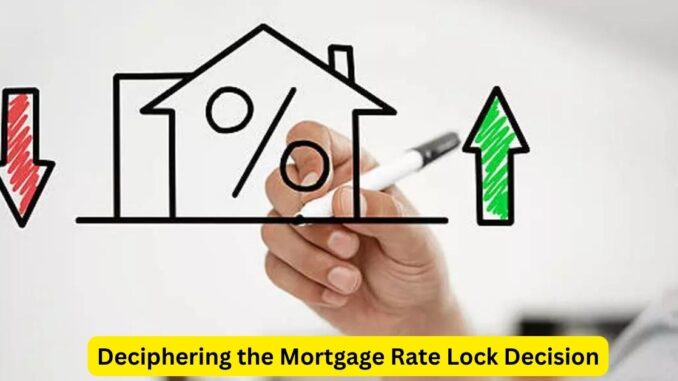
When securing a mortgage, one critical decision borrowers face is whether to opt for a rate lock. A rate lock is an agreement between the borrower and the lender to secure a specific interest rate for a defined period. Understanding the factors influencing this decision can help borrowers make informed choices.
What is a Rate Lock?
A rate lock allows borrowers to secure an interest rate at the time of application, shielding them from potential fluctuations in rates before closing. This agreement typically lasts for 30 to 60 days but can extend to several months, depending on the lender’s policies.
Market Volatility and Timing
Market conditions play a significant role in the rate lock decision. Interest rates fluctuate daily based on economic factors and market trends. If the market is volatile or rates are expected to rise, locking in a favorable rate early can protect borrowers from potential increases.
However, timing the rate lock is crucial. Locking too early might lead to missed opportunities if rates drop further. Conversely, waiting too long could result in a rate increase, affecting affordability.
Rate Lock Costs and Fees
Some lenders charge fees for rate locks, particularly for longer lock periods. Borrowers should understand these costs and factor them into their decision-making process. Balancing the potential savings from a lower rate against the cost of the rate lock is essential.
Length of Loan Processing
The duration needed to close the loan influences the rate lock period. If the loan process is expected to take longer than the initial lock period, borrowers might need an extended lock to avoid rate expiration and potential rate hikes.
Flexibility Options
Some lenders offer float-down provisions that allow borrowers to adjust to a lower rate if interest rates drop before closing. However, these provisions often come with additional costs or stricter terms. Considering the lender’s policies on rate adjustments can be beneficial.
Risk Tolerance and Financial Planning
Understanding personal risk tolerance and financial goals is crucial. If borrowers are comfortable with a slight rate increase and have flexibility in their budget, they might choose to float the rate and take advantage of potential rate drops. Conversely, those seeking stability and predictability may prefer to lock in a rate.
Consultation and Expert Advice
Engaging with mortgage professionals or financial advisors can provide valuable insights. They can analyze market trends, assess individual financial situations, and offer guidance to help borrowers make informed rate lock decisions aligned with their objectives.
In conclusion, the rate lock decision hinges on market conditions, costs, loan processing timelines, personal preferences, and risk tolerance. Weighing these factors carefully and staying informed about market trends can empower borrowers to make prudent decisions when securing their mortgage, ensuring they secure an interest rate that suits their financial needs and goals.
Leave a Reply